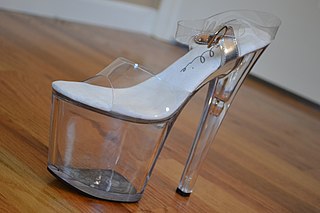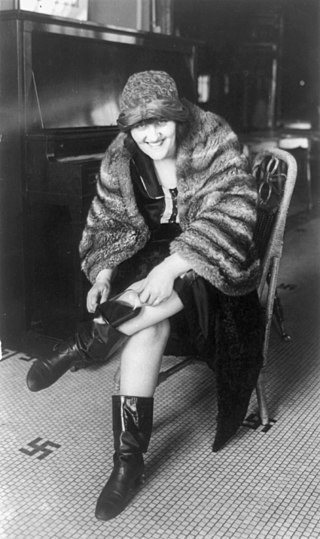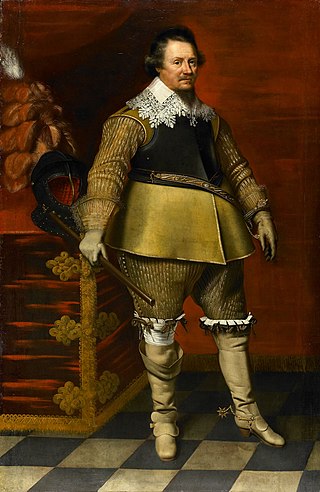| | |
| Founded | 1948 |
|---|---|
| Founder | Herbert and Beth Levine |
| Headquarters | New York |
| Products | Shoes |
| Website | www.herbert-levine.com |
Herbert Levine is an American luxury shoe label founded in 1948 by Herbert Levine and his wife Beth.
| | |
| Founded | 1948 |
|---|---|
| Founder | Herbert and Beth Levine |
| Headquarters | New York |
| Products | Shoes |
| Website | www.herbert-levine.com |
Herbert Levine is an American luxury shoe label founded in 1948 by Herbert Levine and his wife Beth.
The Herbert Levine label was named after former journalist Herbert. His wife, Beth, was the primary shoe designer of the label. She designed the footwear while Herbert handled the factory management, sales, and marketing.
Herbert Levine, Inc. established its first factory on 31 West 31st Street in New York in January 1949. The factory started with a production of 400 pairs of shoes a week; by 1954, it had 200 employees producing 5,000 pair of shoes a week. In 1975, Herbert Levine, Inc. was still making 900 pairs of shoes a day.
Herbert Levine shoes were distributed in numerous boutiques and high-end department stores across the United States and Canada, including Neiman Marcus, Saks Fifth Avenue, Joseph and Bonwit Teller. Herbert Levine shoes were also the first American shoes to be carried overseas by retailers such as Galeries Lafayette in Paris and Harrods in London.
In the 1950s, Herbert Levine advertisements were drawn by famous New York illustrator Saul Steinberg and were regularly published in The New Yorker and in Harper's Bazaar .
Closed in 1975, the label was revived in 2008 by Dennis Comeau [1] and is today owned by Luvanis, an investment holding company.
The Herbert Levine label gained media notoriety for outlandish designs: gilded wood platforms, slippers with newspaper, money, or candy-wrapper covered fabrics, Astroturf insoles, and shoes that were glued onto the wearer's nylon stockings.
Herbert Levine’s greatest influence however was re-introducing boots to women's fashion in the 1960s and the popularization of the shoe style known as mules.[ citation needed ]
Fashion innovations introduced under the Herbert Levine label include:

The house of Herbert Levine served United States First Ladies Jackie Kennedy, Mamie Eisenhower, Lady Bird Johnson, and Patricia Nixon in the 1960s and early 1970s.
Herbert Levine made black velvet knee-high boots for Mamie Eisenhower as well as most of her pumps. For Jackie Kennedy, Herbert Levine custom-made a pair of thigh-high boots in burlap with a stacked heel, as well as many of the flats that became a signature element of the Jackie Kennedy style.
In addition to the popularity of the label with Presidents' wives, Herbert Levine shoes were also a favorite of Broadway stars, movie stars, and socialites. Some of the brand’s famous clients included Barbra Streisand, Marlene Dietrich, Marilyn Monroe, Dinah Shore, Janis Paige, Jane Fonda, Joanne Woodward, Joan Crawford, Lauren Bacall, Barbara Walters, Julie Andrews, Rita Hayworth, Peggy Lee, Cyd Charisse, Joan Collins, Cher, Linda Evans, Babe Paley, Rosemary Clooney, Betty Grable, Gladys Knight, Natalie Wood, Debbie Reynolds, Arlene Francis, Phyllis Diller, Helen Hayes, Chita Rivera, Joan Sutherland, Gwen Verdon, Liv Ullmann, Agnes de Mille, Carol Channing, Ali MacGraw, Barbara Hale, and Angela Lansbury. [18]
Marilyn Monroe wore Herbert Levine shoes both in her private and public life. Visiting Bement on August 9, 1955, Marilyn wore a pair of Herbert Levine's Spring-o-Lators, immortalized by many pictures, notably the series taken by photojournalist Eve Arnold. In 1957, Marilyn purchased Herbert Levine red stilettos (size 7AA) from the Vogue shop in Montreal; those shoes are now part of the Bata Shoe Museum collection in Toronto. [19]
Marlene Dietrich ordered many custom pairs of the so-called "Gigi Stocking Shoes" (in size 7 1/2B), and inspired the "Marlene Boot" line of the label, named for her famous legs.
Joan Crawford was a fan of Herbert Levine's Cinderella shoes. She had those Vinylite shoes custom made by Herbert Levine because "she loved to see her feet." [20]
Mr. and Mrs. Levine were hired in 1965, along with famed couturier Emilio Pucci and designer Alexander Girard, to help overhaul a new look and style for Braniff International Airways. The campaign, developed by Jack Tinker and partner Mary Wells Lawrence, was dubbed The End Of The Plain Plane, and was a revolutionary airline overhaul that had never before been attempted. The campaign was considered one of the most successful advertising and image reworks in history.
In 1954, Herbert and Beth Levine were awarded a Neiman Marcus Fashion Award for their shoe designs.[ citation needed ]
In 1967, a Coty Special Fashion Critics Award was awarded to Beth and Herbert Levine for “the look of the leg.” In 1973, Beth and Herbert Levine received a second Coty Award; to this day they remain the only shoe designers ever to win it twice.[ citation needed ]
Manolo Blahnik: "Beth Levine is without a doubt the most influential American shoe designer of the 20th century. She is to shoes what Eames is to furniture." [22]
Christian Louboutin: "Beth Levine was an influential free spirit. There is nothing that I like more than seeing a creation coming from pure fun and pleasure, and this is always the case with Levine's refreshing work. God bless her for that!" [23]
Herbert Levine shoes are in the collections of more than 20 museums around the world, including the Costume Institute at the Metropolitan Museum of Art (which owns around 140 pairs), the Fashion Institute of Technology in New York, the Bata Shoe Museum in Toronto, and the Kyoto Costume Institute in Japan.[ citation needed ]

A shoe is an item of footwear intended to protect and comfort the human foot. Though the human foot can adapt to varied terrains and climate conditions, it is vulnerable, and shoes provide protection. Form was originally tied to function, but over time, shoes also became fashion items. Some shoes are worn as safety equipment, such as steel-toe boots, which are required footwear at industrial worksites.

Footwear refers to garments worn on the feet, which typically serve the purpose of protection against adversities of the environment such as wear from rough ground; stability on slippery ground; and temperature.

Tabi are traditional Japanese socks worn with thonged footwear such as zori, dating back to the 15th century.

Clogs are a type of footwear made in part or completely from wood. Used in many parts of the world, their forms can vary by culture, but often remained unchanged for centuries within a culture.

Platform shoes are shoes, boots, or sandals with a thick sole, usually in the range of 3–10 cm (1–4 in). Platform shoes may also be high heels, in which case the heel is raised significantly higher than the ball of the foot. Extreme heights, of both the sole and heel, can be found in fetish footwear such as ballet boots, where the sole may be up to 20 cm (8 in) high and the heels up to 40 cm (16 in) or more. The sole of a platform shoe can have a continuous uniform thickness, have a wedge, a separate block or a stiletto heel. Raising the ankle increases the risk of a sprained ankle.

Thigh-high boots, known also as thigh-length boots or simply thigh boots, are boots that extend above the knees to at least mid-thigh. Other terms for this footwear include over-the-knee boots, a name originally used for 15th century riding boots for men. These are sometimes called pirate boots, especially when cuffed. Over-the-knee boots are sometimes abbreviated to OTK boots. Lengths vary from reaching just over the knee to reaching almost to the crotch.

Mule is a style of shoe that has no back or constraint around the foot's heel. Mules have a history going as far back as Ancient Rome, even though they were not popularly worn until sixteenth-century Europe. There, mules were bedroom slippers and not worn in public. Through the centuries, mules have changed in style and purpose and are no longer just boudoir shoes but are worn at any time, for any occasion. In addition to Western examples, mules come from cultures such as Turkey and Egypt, and appear in popular culture, from famous paintings to iconic celebrities' shoes.

The Bata Shoe Museum (BSM) is a museum of footwear and calceology in Toronto, Ontario, Canada. The museum's building is situated near the northwest of the University of Toronto's St. George campus, in downtown Toronto. The 3,665-square-metre (39,450 sq ft) museum building was designed by Moriyama & Teshima Architects, with Raymond Moriyama as the lead architect.

Manuel "Manolo" Blahnik Rodríguez is a Spanish fashion designer and founder of the eponymous high-end shoe brand.

High-heeled shoes, also known as high heels or pumps, are a type of shoe with an upward-angled sole. The heel in such shoes is raised above the ball of the foot. High heels cause the legs to appear longer, make the wearer appear taller, accentuating the calf muscle.
Maud Frizon de Marco is a fashion designer specializing in women's shoes. She began her career in the 1960s as a model for Parisian Haute Couture Houses of Nina Ricci, Jean Patou, and André Courrèges. At the time models had to provide their own shoes to match the clothes designers assigned them for their runway shows and photo shoots. Frizon disliked the available shoes from other designers, and in 1969 elected to create her own and opened her first boutique in the Saint-Germain-des-Prés district of Paris.

Beth Levine was an American fashion designer most known for her designs from the 1940s through the 1970s.

Roger Henri Vivier was a French fashion designer who specialized in shoes. His best-known creation was the stiletto heel.
Susan Bennis/Warren Edwards was a successful New York-based shoe company founded in 1972 by Susan Bennis and Warren Edwards. It dissolved in 1997.

Go-go boots are a low-heeled style of women's fashion boot first introduced in the mid-1960s. The original go-go boots, as defined by André Courrèges in 1964, were white, low-heeled, and mid-calf in height, a specific style which is sometimes called the Courrèges boot. Since then, the term go-go boot has come to include the knee-high, square-toed boots with block heels that were very popular in the 1960s and 1970s; as well as a number of variations including kitten heeled versions and colours other than white.

A fashion boot is a boot worn for reasons of style or fashion. The term is usually applied to women's boots. Fashion boots come in a wide variety of styles, from ankle to thigh-length, and are used for casual, formal, and business attire. Although boots were a popular style of women's footwear in the 19th century, they were not recognized as a high fashion item until the 1960s. They became widely popular in the 1970s and have remained a staple of women's winter wardrobes since then.

Russian boot is the name applied to a style of calf- or knee-length fashion boot for women that was popular in the early part of the 20th century. Russian boots fell out of favor in the 1930s, but were the inspiration for the high-leg fashion boots that returned to popularity in the 1950s and 60s. Today the term Russian boot is sometimes applied to the style of low-heeled boots worn by some folk dancers.

Over-the-knee boots, OTK boots, are long boots that fully or partly cover the knee. Originally created as a man's riding boot in the 15th century, in the latter part of the 20th century, the style was redefined as a fashion boot for women. Over-the-knee boots are also used as a work boot in circumstances requiring additional protection for the legs.

Nicole Camphaug is a Canadian Inuk fashion and jewellery designer from Nunavut. She is primarily known for creating sealskin-covered shoes and other contemporary Inuit fashion items under the label ENB Artisan, which she runs with her husband. Camphaug uses commercially purchased shoes and covers them with sealskin and ornaments made from traditional animal materials like caribou, muskox, and narwhal. The pelts are sourced from Labrador. She also makes jewellery from bone, tusk, and similar materials.

The armadillo shoe is a high fashion platform shoe created by British fashion designer Alexander McQueen for his final collection, Plato's Atlantis. Only 24 pairs exist: 21 were made during the initial production in 2009, and three were made in 2015 for a charity auction. The shoes are named for their unusual convex curved shape, said to resemble an armadillo. Each pair is approximately 12 inches (30 cm) from top to sole, with a 9-inch (23 cm) stiletto heel; this extreme height caused some models to refuse to walk in the Plato's Atlantis show. American singer Lady Gaga famously wore the shoes in several public appearances, including the music video for her 2009 single "Bad Romance".